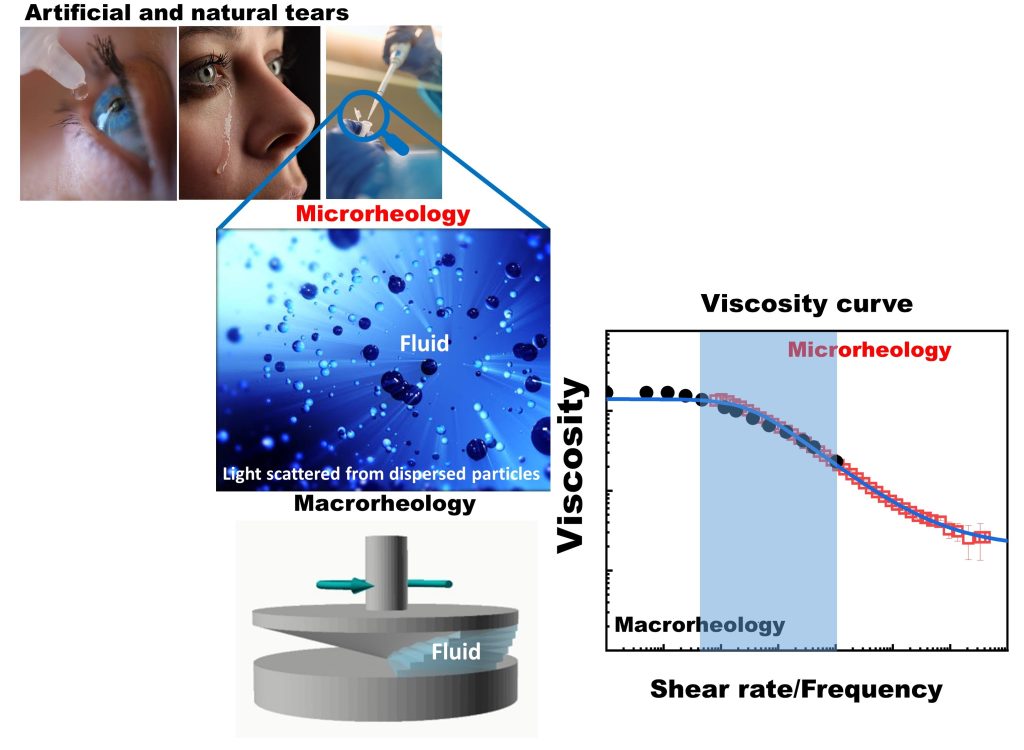New method reveals intricate behaviors of micron-sized particles in real, artificial tears.
From the Journal: Physics of Fluids

WASHINGTON, July 11, 2023 – Compared to artificial tears, or eye drops, human tears are significantly more complex liquids, with a wide range of components including lipids, carbohydrates, proteins, water, and salt. It is this complex mixture that gives tears the perfect thickness and ability to moisturize the eye, a design that is hard to replicate with fewer ingredients.
In Physics of Fluids, from AIP Publishing, Vega et al. researched human tears at the micron level to reveal new ways of customizing artificial tears to address individual symptoms of dry eye disease. The detailed insights they gained about the composition and behavior of tears could also apply to the study of ocular pathogens, as well as other biological fluids.
“Tailoring formulations and characteristics to meet individual requirements are key considerations in achieving efficacy,” author Juan F. Vega said. “The ultimate goal is to provide an effective and personalized solution that alleviates dry eye syndrome.”
The authors collected healthy human tears and tested 10 different formulations of artificial tears, probing these liquids to understand properties such as viscosity (flow), elasticity and stability and the effects of different concentrations of components in the liquids. They also tested the behavior of the liquids under stress, such as when the eye blinks.
To study the tiny volumes of liquid in tears, the authors applied microrheology methods, which monitor the movement of micron-sized particles in liquids, using a technique that measures how light reflects off particles suspended in liquid to reveal how the liquid behaves in different scenarios, known as dynamic light scattering, or DLS.
The authors’ unique application of these methods to the study of tears has implications both for the fundamental knowledge of microbiological fluids and for the design of functional materials with specific desired properties, Vega said.
“The goal of investigating these characteristics is to understand the behavior of the fluid and gain insights into its performance and potential applications – for example, cosmetics, pharmaceuticals, or food – where understanding the viscoelastic properties helps in formulating products with desirable textures, stability, and flow behavior,” Vega said.
The authors plan to continue to explore more complex formulations of artificial tears and extend their work to the study of human tears with different pathologies.
“Through careful tuning, artificial tears can be tailored to meet specific needs, such as stability, lubrication, and moisturization, and mimicking natural tears,” Vega said. “Ultimately, this work aims to enhance the comfort and well-being of individuals experiencing dry eye symptoms.”
###
For more information:
Wendy Beatty
media@aip.org
301-209-3090
Article Title
Authors
Juan F. Vega, Mercedes Fernández, Andrés Cardil, Itxaso Calafel, Itziar Martínez- Soroa, Ane Pérez Sarriegui, and Arantxa Acera
Author Affiliations
Instituto de Estructura de la Materia, University of the Basque Country, Miranza Begitek Clinic, Donostia University Hospital, Basque Foundation for Science
